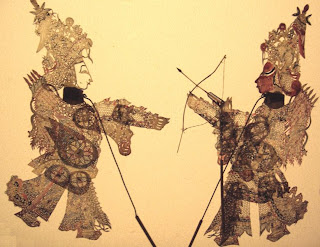Instant Shadow Murals
Objective:
Students will be introduced to concepts of performance art, They will learn about how to create compositions keeping positive and negative space in mind, students will be introduced to the history of the shadow puppet theater, students will be introduced to the history of Latin American mural painting,and introduced to art placed in the public realm.
Materials:
Screen (big white sheets), Light kit, two flip video cameras, two tripods, Mac book pro, our bodies, speakers or a boom box for mood music, journals, clip lights, staple gun, colored light bulbs.
Motivation/ Inspiration:
If I could express anything to anyone who would it be? What would I say to some one like Oprah, President Obama, Justin Bieber ect.? How could I portray these issues threw an art expression? Can one person make a difference in the world? What things can one do in his or her own life to make a positive change in the world? How can I work with others (friends, family, school mates) to make a change?
Warm-Up:
Hand sculpture exercise then body sculpture exercise
Activity:
Participants will journal about statement that they would like to make to a community. They will sketch tableaus based on the statements that they would like to communicate. Students will consider how human bodies can be sculpted into props, back drop, wardrobe. Participants will be split up into small or medium groups they will use a their tableau sketches as references to act out scenes using their bodies. They after each group has rehearsed and feels comfortable with the tableau that they have created we will transfer it to behind the screen. Their shadow silhouette will then be photographed and videoed. If there is enough time the groups can collaborate to make one giant all inclusive shadow mural. The class will then look at what they have made and compose statements to be viewed with the shadow murals.
Follow-up:
Personal art experience journaling exercise: Participant should write one to ten lines about their experience in class. Sample questions to answer: What was my favorite thing about today’s class? What did I not enjoy about today’s class? What are 3 things I learned? What are 3 things I am proud of? How did I feel after today’s class? Is there any thing that I want to state about my art piece? Note: if the child is not developmentally capable of writing it is encouraged that the child draw a picture or verbalize what they would like to be written and it be transcribed by a volunteer.
Historical/Conceptual Notes:
A mural is any piece of artwork painted directly on a wall, ceiling or other large permanent surface. Murals of sorts date to Upper Paleolithic times such as the paintings in the Chauvet Cave in Ardèche department of southern France (around 30.000 BC). Many ancient murals have survived in Egyptian tombs (around 3150 BC),[1] the Minoan palaces (Middle period III of the Neopalatial period, 1700-1600 BC) and in Pompeii (around 100 BC - AD 79).
In modern times the term became more well-known with the Mexican "muralista" art movement (Diego Rivera, David Siqueiros, or José Orozco). There are many different styles and techniques. The best-known is probably fresco, which uses water-soluble paints with a damp lime wash, a rapid use of the resulting mixture over a large surface, and often in parts (but with a sense of the whole). The colors lighten as they dry. The marouflage method has also been used for millennia.
Murals today are painted in a variety of ways, using oil or water-based media. The styles can vary from abstract to trompe-l'œil (a French term for "fool" or "trick the eye"). Initiated by the works of mural artists like Graham Rust or Rainer Maria Latzke in the 1980s, trompe-l'oeil painting has experienced a renaissance in private and public buildings in Europe. Today, the beauty of a wall mural has become much more widely available with a technique whereby a painting or photographic image is transferred to poster paper or canvas which is then pasted to a wall surface (see wallpaper, Frescography) to give the effect of either a hand-painted mural or realistic scene.
Shadow play or shadow puppetry is an ancient form of storytelling and entertainment using opaque, often articulated figures in front of an illuminated backdrop to create the illusion of moving images. It is popular in various cultures. At present, more than 20 countries are known to have shadow show troupes.
Performance art refers largely to a performance which is presented to an audience but which does not seek to present a conventional theatrical play or a formal linear narrative, or which alternately does not seek to depict a set of fictitious characters in formal scripted interactions. It therefore will often include some form of action or spoken word which is a form of direct communication between the artist and audience, rather than a script written beforehand.
http://www.youtube.com/watch?v=sNNNIz2Y1q0&feature=channel
^^^^^^^^^^^^^^^^^
This is a Super Cool Example of Shadow Dance.



No comments:
Post a Comment